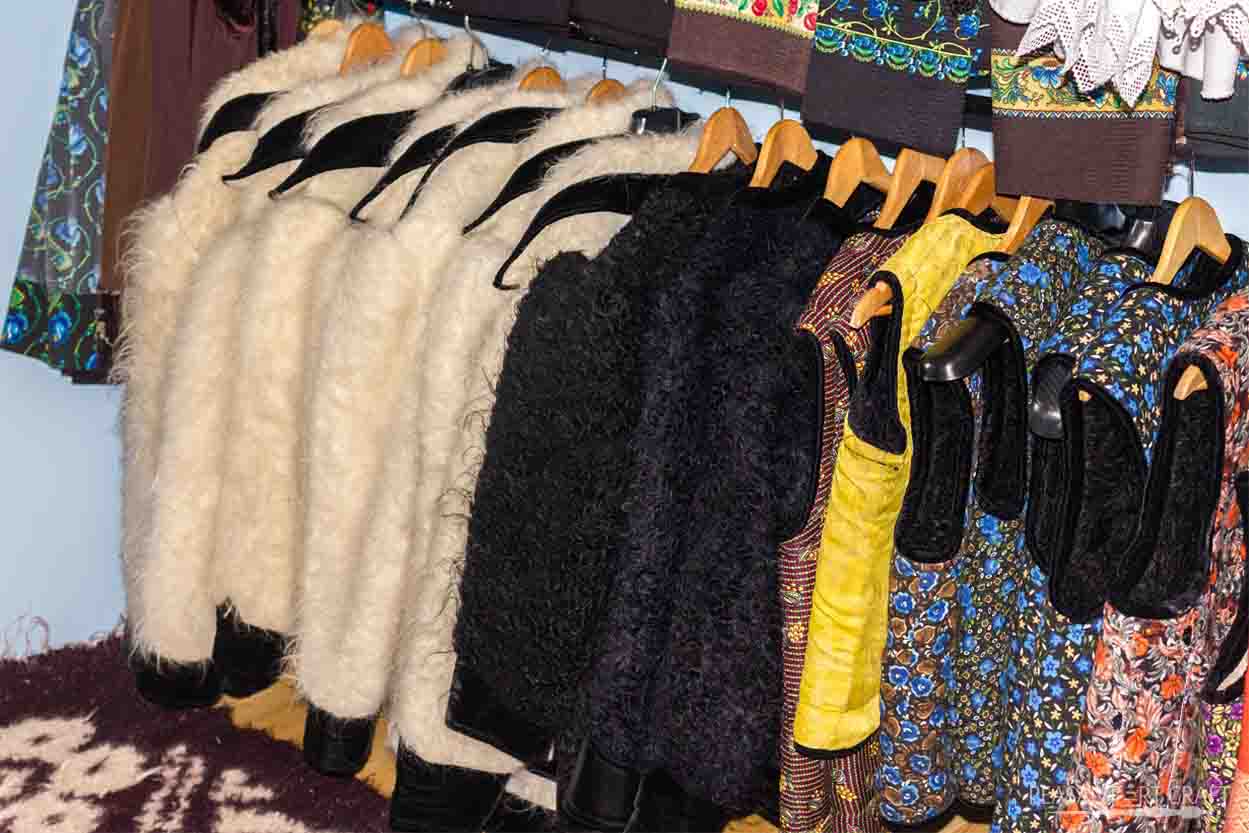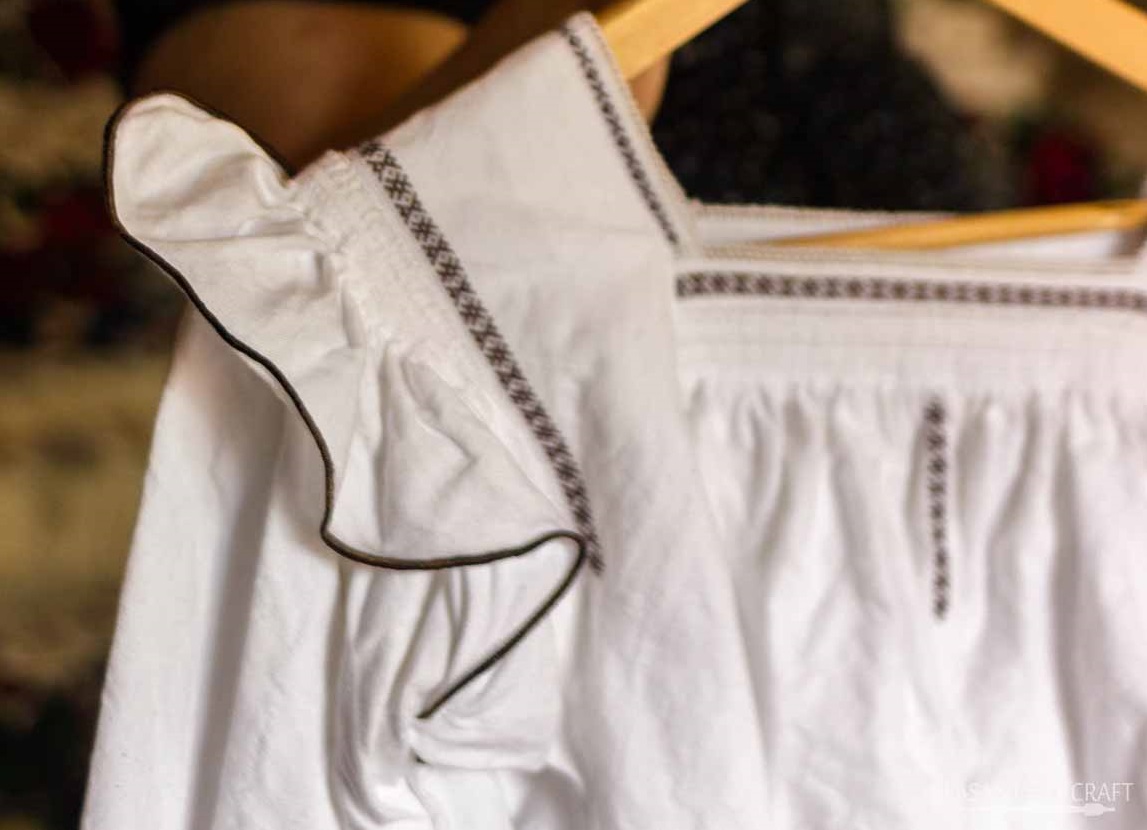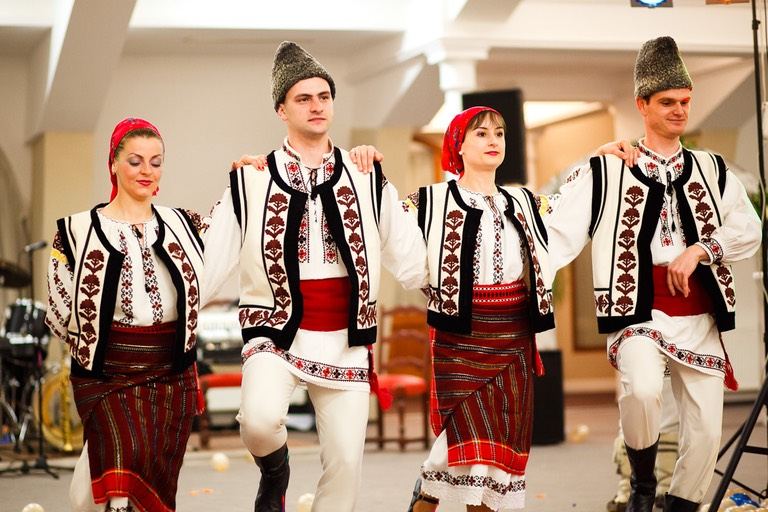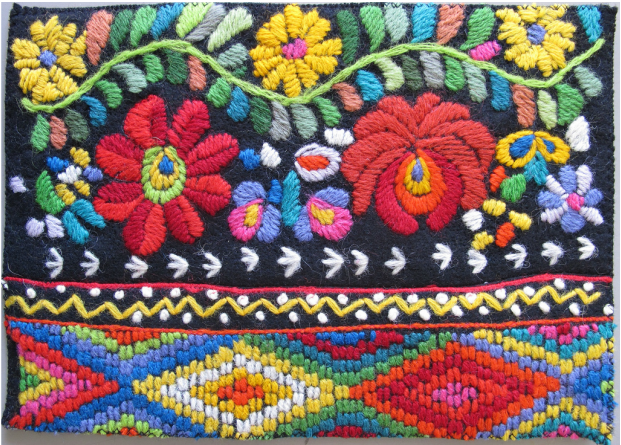
Traditional Romanian woven carpets and rugs with colorful motifs in Suceava County, Bucovina.
In the neighbouring village of Budeti, 76-year-old Anuta Ciceu introduced to the traditional Romanian textiles of Maramure, just one mile from the village of Sarbi, where we earned an education in straw hat making. The best way to communicate with the local community here in Northern Romania. Craftsmen like Anuta, who with her hands lovingly creates traditional textiles. She decorated with big furry sheepskin covering the floor and sofa in a neutral tone, and long hand woven eye catching towels. Its draped around ceramic plates with floral designs, adding color to the room.

Romanian Textiles by Textile Artisan Anuta Ciceu

Romanian Textiles From Maramures Hand Embroidered
On wooden beams, layers of hand woven folk textiles, thick wool blankets, lace towels and embroidered linens hang from the ceiling. The bed had woollen sheets on it. Decorative pillows on the bed and on the upper beams are used in abundance. The wall behind the bed, dressed in a floral tapestry style, is very similar to that of Bucovina. Piled next to the bed are hand woven blankets, tapestry, rugs, embroidered sheets, tablecloths, towels and table runners.
Textile weaving is the most common craft in Romania. It is passed down from generation to generation, along with those unique to different districts, using distinctive family patterns. Wool and cotton, the prevalent fabrics, are woven into rugs, wall hangings, table covers and apparel.
Romanian Clothing [Women’s]
In Romania Each village has its own clothing style that defines the wearer as belonging to a particular region, there are similar characteristics. Traditional dress is a chemise for women with a yoke, a square collar and puffy sleeves gathered at the wrists and shoulders, with frills and frilled cuffs at the yoke.Romanian Clothing Style

Hand Woven and Embroidered

Romanian style clothing

Hand Woven and Embroidered neckline
Striped aprons (zadii), one worn on the back and one on the front, are tied in place with a woven belt above the white underskirt. There is an array of floral printed scarves displayed on a wooden frame for headcovers. A late addition is floral collected skirts and lacy blouses made of factory manufactured fabric and hand made designs are much costly.

Romanian Traditional Dress which worn by native women
Romanian Clothing [Men’s]
Over the white chemise, men wear short wide leather waistbands, very wide trousers in summer and tight woollen winter trousers (cioareci). Men’s wearing tiny bucket braided straw hats in Maramure. In summer fur hats as part of their typical outfit in winter. Unisex multicolored embroidered tasselled vinyl vests in summer. Thick woollen coats (gube) and woollen socks in winter are added to the ensemble of outer clothing unique to the region.

Romanian traditional costume for men and women in winter
EMBROIDERY
Embroidery on folk costumes worn for holidays and special occasions (such as weddings). Follows strict regional patterns and is often known only to individuals in various regions as a kind of hidden language.
This type of embroidery was characteristic of older patterns used throughout south Eastern Europe and Slovakia. In the latter half of 19th century freestyle non-geometric floral motifs were introduced. These are more commonly found in the north and western part of central and Eastern Europe. Over the centuries there was frequent borrowing and sharing of motifs between regions and zones, and between urban and rural areas. In general the decoration became more elaborate reaching its zenith around 1900, with many different techniques often being used on a single garment, or household textile.

Romanian Embroidery Design Pattern
These motifs can be divided into:
A) Geometric – counted thread embroidery worked on fabrics with distinct weave
B) Non geometric (free style) – Curvilinear open designs often worked on cloth with indistinct threads such as cloth, felt and velvet, often in gold or silver thread. This type of embroidery was of Oriental origin.
C) Mixed
Geometric motifs are worked onto to the cloth using these techniques:
a. Stitches sewn on face of cloth
b. Stitches sewn after pulling woven threads from cloth (drawn thread work)

Embroidered dress up in their best traditional costumes and celebrate with dance and music, adding to the festive atmosphere.
References:
- Peasant Art and Craft
- Wikipedia
- Fashion Blog
- Its GOA
- Just Style
- A Search History
